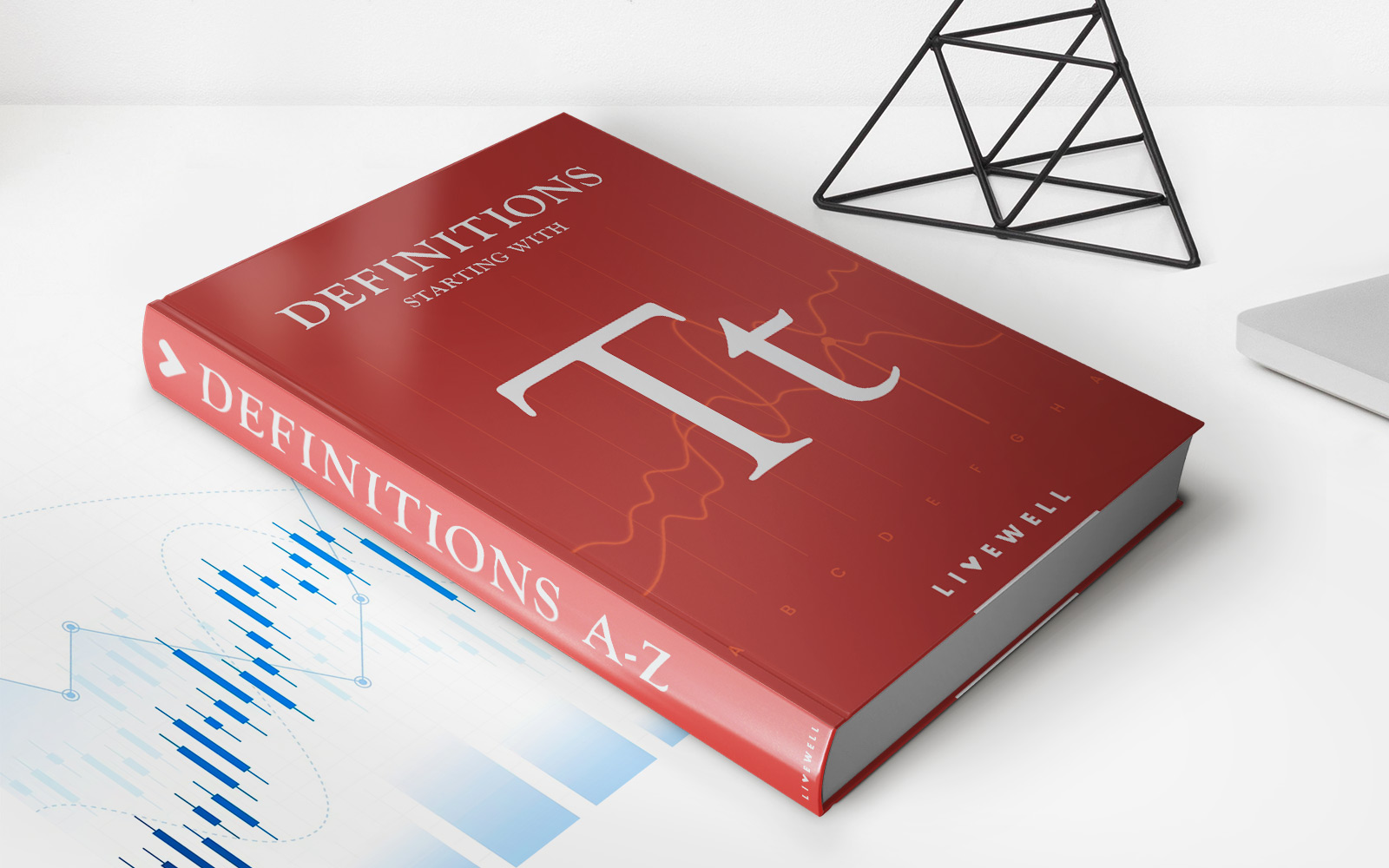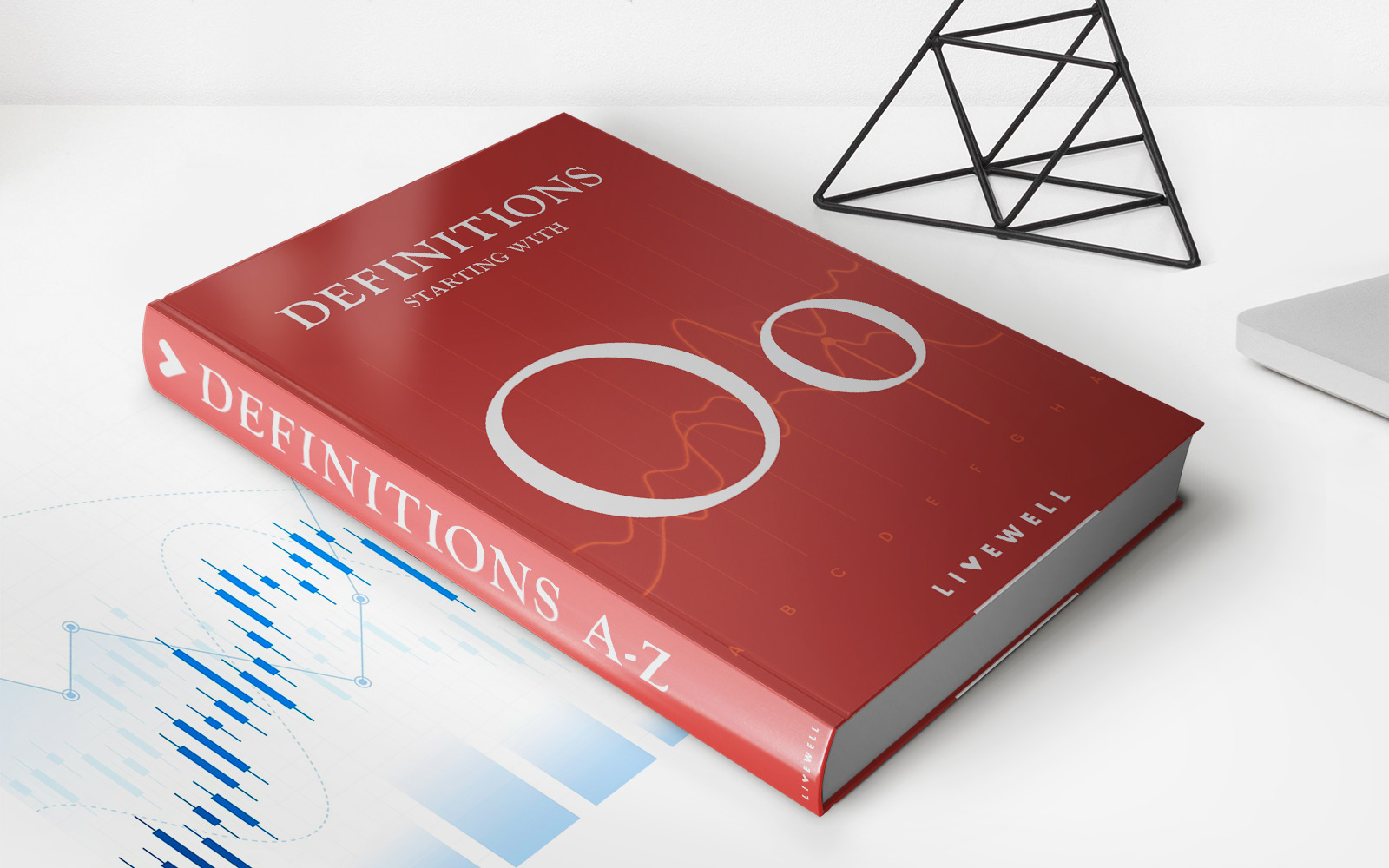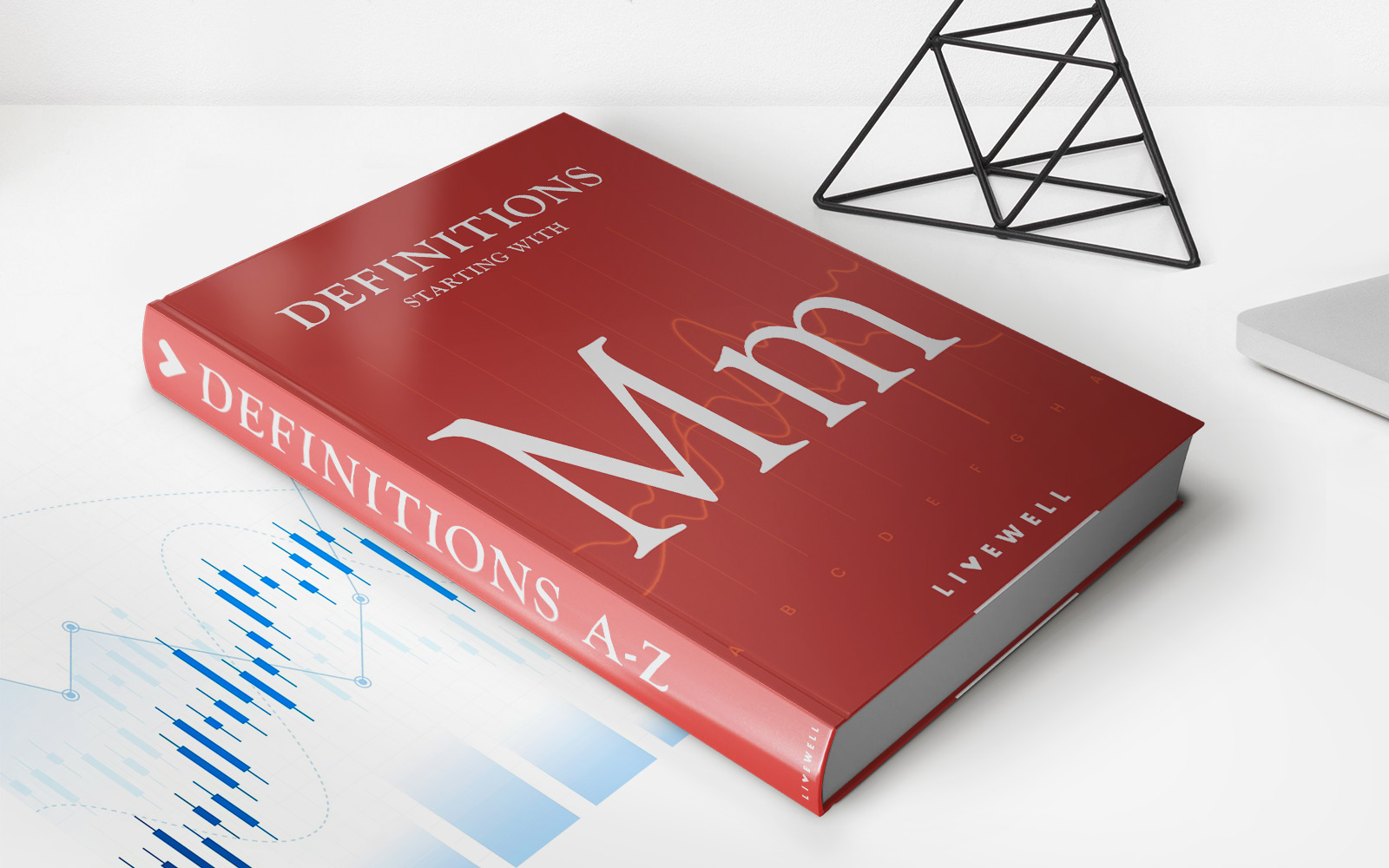

Finance
What Is A Teacher Pension Worth?
Published: November 27, 2023
Discover the worth of a teacher pension and explore the financial implications. Find out how to calculate it and make informed decisions to secure your future.
(Many of the links in this article redirect to a specific reviewed product. Your purchase of these products through affiliate links helps to generate commission for LiveWell, at no extra cost. Learn more)
Table of Contents
Introduction
Teacher pensions are an integral part of the financial landscape for educators. They provide a valuable source of retirement income and serve as a key component of a teacher’s overall compensation package. Understanding the worth of a teacher pension is crucial for educators as they plan for their future.
Teacher pensions are designed to provide educators with financial security during their retirement years, ensuring that they can maintain a comfortable standard of living after a lifetime of service in the classroom. However, determining the actual value of a teacher pension can be complex and varies depending on various factors.
In this article, we will explore the factors that affect the worth of a teacher pension and how it is calculated. We will also discuss the importance of teacher pensions, the variations in teacher pension benefits, the challenges faced by teachers with pension plans, and strategies to maximize the worth of a teacher pension.
By gaining a deeper understanding of these aspects, teachers can make informed decisions about their financial future and take steps to ensure that they receive the maximum value from their pension plan.
Factors Affecting Teacher Pension Value
The value of a teacher pension is influenced by various factors that directly impact the retirement benefits an educator receives. These factors include:
- Salary: One of the primary factors affecting the value of a teacher pension is the educator’s salary during their working years. Typically, the pension benefit is calculated based on a percentage of the average salary earned throughout the teacher’s career. Higher salaries can result in larger pension payouts.
- Years of Service: The length of a teacher’s career plays a significant role in calculating the value of their pension. Generally, the longer the educator has taught, the larger their pension benefit will be. Many pension plans use a formula that multiplies the number of years of service by a predetermined percentage to determine the final pension amount.
- Pension Formula: Each state and school district has its own pension formula for calculating benefits. This formula typically takes into account factors such as years of service, salary, and a specific percentage multiplier. Understanding the specific pension formula in place is essential for teachers to gauge the value of their pension accurately.
- Retirement Age: The age at which a teacher retires can impact the value of their pension. Some pension plans have early retirement penalties, while others provide incentives for teachers who work beyond a certain age. Teachers who choose to retire early may receive a reduced pension benefit compared to those who retire at the plan’s normal retirement age.
- Contribution Rate: The contribution rate for teacher pensions can vary depending on the state and district. This rate refers to the percentage of an educator’s salary that is deducted to fund their pension. Higher contribution rates often result in higher pension benefits.
It is important for teachers to understand how each of these factors affects the value of their pension. By considering these elements, educators can plan effectively for their retirement and make informed decisions about their career and financial future.
Calculation of Teacher Pension Worth
The calculation of a teacher’s pension worth involves several factors and varies depending on the specific pension plan in place. While the exact formulas and calculations may differ from state to state and district to district, there are common elements that are generally considered in determining the value of a teacher’s pension.
One common method used to calculate teacher pensions is based on a formula that takes into account the teacher’s final average salary, years of service, and a predetermined percentage multiplier. For example, a pension formula might multiply an educator’s average salary by 2% for every year of service. If a teacher has 20 years of service and an average salary of $50,000, their annual pension benefit would be $20,000 (20 years x 2% x $50,000).
In some cases, pension plans have a vesting period, which is the length of time an educator must work in order to qualify for the full pension benefit. Vesting periods can vary, but typically range from 5 to 10 years of service. If a teacher leaves their position before the vesting period is met, they may only be eligible for a partial pension benefit.
It’s important to note that some pension plans use a hybrid model that combines the traditional defined benefit plan with a defined contribution plan, such as a 401(k). In these cases, a portion of the pension benefit is calculated using the traditional formula, while another portion is based on the contributions and investment returns of the 401(k)-like account.
Teachers should also be aware that there may be additional factors that can impact the worth of their pension, such as annual cost-of-living adjustments (COLAs), which aim to account for inflation and provide pensioners with increased benefits over time.
To obtain an accurate estimation of their pension worth, teachers should consult their pension plan’s administrators or utilize online calculators specifically designed for estimating teacher pensions.
Understanding the calculation of their teacher pension worth can help educators make informed decisions about their retirement planning, such as considering additional saving vehicles like individual retirement accounts or other investment strategies to supplement their pension income.
Importance of Teacher Pensions
Teacher pensions play a vital role in ensuring the financial security and stability of educators during their retirement years. Here are some key reasons why teacher pensions are important:
1. Retirement Income: Teacher pensions provide a reliable and consistent source of income for retired educators. This income helps teachers maintain their standard of living and cover expenses such as housing, healthcare, and daily necessities.
2. Long-Term Financial Security: Teaching is a noble profession, but it often comes with lower salaries compared to other occupations requiring similar levels of education and experience. Teacher pensions serve as a way to bridge the gap and provide educators with long-term financial security after years of dedicated service.
3. Rewarding Years of Service: Teacher pensions recognize and reward the commitment and years of service put in by educators. They acknowledge the invaluable contributions teachers make to society by shaping the minds of future generations.
4. Retaining Experienced Teachers: An attractive pension plan can help in retaining experienced and highly skilled teachers in the education system. It offers an incentive for educators to continue their careers in teaching rather than seeking employment in different sectors.
5. Recruitment Tool: Comprehensive retirement benefits, including pensions, can serve as a recruitment tool to attract talented individuals to the teaching profession. The promise of a secure retirement can help in attracting and retaining top talent, ensuring a high-quality education system.
6. Economic Stimulus: Teacher pensions contribute to the overall economy by providing retired teachers with a stable income stream. These funds are subsequently spent on goods and services, supporting local businesses and communities.
7. Social Safety Net: Teacher pensions act as a social safety net, preventing retired educators from falling into poverty or relying solely on government assistance programs. They provide a measure of financial independence and stability for retired teachers.
Overall, teacher pensions are crucial for promoting the well-being of educators and recognizing their contributions to society. They not only ensure a dignified retirement for teachers but also contribute to the overall strength and sustainability of the education system.
Variations in Teacher Pension Benefits
While teacher pensions are a common feature in many education systems, the specific benefits and structures can vary significantly. Here are some of the key variations in teacher pension benefits:
1. Defined Benefit vs. Defined Contribution: Teacher pension plans generally fall into one of these two categories. Defined benefit plans guarantee a specific retirement benefit based on factors such as years of service and salary. Defined contribution plans, on the other hand, allow teachers to contribute a portion of their salary to an individual retirement account, with the eventual benefit depending on the investment performance of the account.
2. Eligibility Requirements: The eligibility criteria for teacher pensions can vary. Some pension plans have vesting periods, which stipulate a certain number of years of service before teachers become eligible for full pension benefits. Others may have age requirements, retiring at a specific age to receive the full pension benefit.
3. Percentage Multipliers: Different pension plans utilize different percentage multipliers to calculate the pension benefit. These multipliers are applied to factors such as years of service and salary to determine the final pension amount. The percentages can vary based on the specific plan and may be subject to legislative changes over time.
4. Cost-of-Living Adjustments (COLAs): Some teacher pension plans include automatic cost-of-living adjustments that increase pension benefits to account for inflation. These adjustments help retired teachers maintain their purchasing power over time, ensuring that their pension income keeps up with the rising cost of living. However, not all pension plans offer COLAs, and those that do may have limitations or conditions.
5. Portability: Teacher pension plans differ in their portability, which refers to the ability of teachers to transfer their pension benefits if they move to a different state or district. Some plans allow for portability, allowing teachers to continue accruing benefits even if they transfer to a new position. Others have restrictions or limitations on portability, potentially impacting the overall value of a teacher’s pension.
6. Supplemental Retirement Accounts: Some teacher pension plans offer supplemental retirement accounts, such as 403(b) or 457(b) plans, that allow teachers to contribute additional funds towards their retirement savings. These accounts can provide an additional source of retirement income alongside the pension benefit.
7. Early Retirement Penalties or Incentives: Pension plans may have provisions for early retirement, but they can also impose penalties for retiring before a certain age or minimum years of service. Conversely, some plans offer incentives for teachers who work beyond their normal retirement age, such as increased benefit accrual rates. These variations can impact the timing and overall value of a teacher’s pension.
It is essential for teachers to understand the specific variations in their pension benefits to effectively plan for retirement and make informed decisions about their financial future.
Challenges Faced by Teachers with Pension Plans
While teacher pension plans offer valuable retirement benefits, there are certain challenges that educators may encounter when navigating these pension systems. Here are some of the common challenges faced by teachers with pension plans:
1. Funding Shortfalls: Many teacher pension plans face significant funding shortfalls, meaning that the amount of money set aside to cover future pension obligations may be insufficient. This can lead to concerns about the long-term sustainability and stability of the pension system.
2. Changing Pension Legislation: Legislative changes to pension plans can have a significant impact on teachers’ retirement benefits. Alterations to contribution rates, benefit formulas, or eligibility requirements can result in teachers receiving lower pension benefits than they initially anticipated or planned for.
3. Lack of Portability: Some teacher pension plans lack portability, making it difficult for educators to transfer their pension benefits if they switch jobs or move to a different state or district. This lack of portability can lead to fragmented retirement savings and make it challenging for teachers to consolidate and maximize their pension benefits.
4. Balancing Retirement Savings: Depending solely on a teacher pension plan for retirement savings can pose challenges in terms of diversification and flexibility. Educators may need to consider additional retirement savings vehicles like individual retirement accounts (IRAs) or 403(b) plans to ensure a well-rounded and comprehensive retirement portfolio.
5. Inadequate Cost-of-Living Adjustments: Some teacher pension plans offer limited or no cost-of-living adjustments (COLAs) to account for inflation. This can result in a loss of purchasing power over time, as pension benefits fail to keep pace with the rising cost of living. Teachers may need to plan accordingly to ensure their income can sustain them throughout retirement.
6. Early Retirement Penalties: Pension plans often impose penalties for teachers who choose to retire early, before reaching a specific age or minimum years of service. These penalties can reduce the overall value of the pension benefit, requiring educators to carefully consider the financial implications of early retirement decisions.
7. Lack of Financial Literacy: Understanding the complexities of teacher pension plans can be challenging for many educators. The lack of financial literacy and awareness about pension benefits can hinder teachers’ ability to make informed decisions and maximize the value of their pensions.
Despite these challenges, it is crucial for teachers to stay informed, seek guidance from qualified professionals, and develop a comprehensive retirement strategy that includes a combination of pension benefits, additional savings, and investment vehicles to ensure a secure and comfortable retirement.
Strategies to Maximize Teacher Pension Worth
As educators plan for their retirement, there are several strategies they can employ to maximize the worth of their teacher pension. These strategies can help teachers make the most of their pension benefits and ensure a financially secure retirement:
1. Stay Informed: Educators should take the time to understand the details of their specific pension plan. This includes knowing the eligibility criteria, pension formulas, vesting periods, and any changes or updates to the plan. Staying informed allows teachers to make informed decisions and take advantage of all the benefits available to them.
2. Extend Working Years: Teachers can maximize their pension worth by extending their working years. By working beyond the minimum retirement age or increasing their years of service, teachers can accrue more substantial pension benefits. Additionally, extending working years allows teachers to continue contributing to their pension plan and potentially increase their salary, leading to higher future pension payouts.
3. Consider Additional Contributions: Some pension plans allow teachers to make additional voluntary contributions. By contributing more to their pension plan, educators can enhance their future pension benefits. Teachers should consult with their plan administrators to understand the options and potential benefits of making additional contributions.
4. Explore Retirement-Savings Options: Teachers should consider supplementing their pension with additional retirement savings vehicles, such as individual retirement accounts (IRAs) or 403(b) plans. By diversifying their retirement savings, educators can potentially increase their overall retirement income and reduce reliance on the pension alone.
5. Plan for Early Retirement: If early retirement is a goal, teachers should carefully assess the potential impact of early retirement penalties on their pension benefit. By understanding the specific penalties and considering other income sources or part-time employment, teachers can develop a comprehensive plan to bridge any gap created by early retirement.
6. Stay Engaged in Professional Development: Some pension plans offer additional benefits or incentives for teachers who engage in ongoing professional development activities. By staying current in their field and participating in professional growth opportunities, educators may enhance their eligibility for these additional benefits, ultimately maximizing their pension worth.
7. Seek Professional Financial Guidance: Teachers should consider consulting with a qualified financial advisor who specializes in retirement planning. A financial expert can provide personalized advice tailored to individual circumstances, offer insight into pension options, and help develop a comprehensive retirement strategy that aligns with each teacher’s goals and priorities.
Maximizing the worth of a teacher pension requires thoughtful planning, proactive decision-making, and ongoing evaluation of retirement goals. By implementing these strategies, educators can optimize their pension benefits and work toward a stable and secure retirement.
Conclusion
Teacher pensions are a crucial component of an educator’s financial future, providing a reliable source of retirement income and recognizing the valuable service they have rendered to society. However, understanding the worth and intricacies of teacher pensions is essential for teachers to make informed decisions about their retirement planning.
Factors such as salary, years of service, pension formula, retirement age, and contribution rates all play a role in determining the value of a teacher pension. Teachers should familiarize themselves with these factors and stay updated on any changes or updates to their pension plan.
Teacher pension benefits can vary significantly between different states and districts, including differences in eligibility requirements, portability, percentage multipliers, and cost-of-living adjustments. Teachers must understand these variations to effectively plan for their retirement and maximize the benefits they receive.
Despite the challenges faced by teacher pension systems, educators can employ strategies to enhance the worth of their pensions. Staying informed, extending working years, considering additional contributions, exploring retirement savings options, planning for early retirement, staying engaged in professional development, and seeking professional financial guidance are all valuable strategies for optimizing teacher pension benefits.
Ultimately, by taking a proactive approach and making informed decisions, educators can ensure a financially secure and stable retirement. Teacher pensions serve as a testament to the significant contributions teachers make to society and provide a foundation for their well-deserved retirement.
As teachers dedicate their lives to educating and shaping future generations, it is vital that they also prioritize their own financial future. By understanding their teacher pension worth and implementing the strategies outlined in this article, educators can confidently plan for a comfortable and fulfilling retirement.














